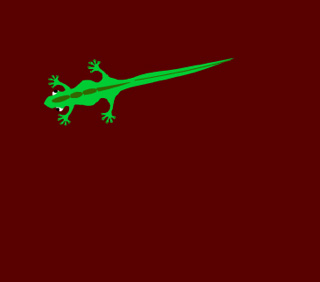Splash art originated in the 1940s in comics, where the term referred to a full page of visuals at the front of a book. Pages were designed to engage the reader's imagination along the lines of the comic's broader concept, while standing independent from the narrative. In the late 1990s, when the widespread use of the application Flash opened up new possibilities for animation and interactive media, the idea of the splash page migrated to web design. Online splash art brought visual excitement to a webpage when low modem speeds made it impractical to post large or moving images amid a site's textual content.
Rhizome introduced splash pages to its web site in 1998 in order to display artwork with greater immediacy....
Rhizome introduced splash pages to its web site in 1998 in order to display artwork with greater immediacy....
Launch Project 
 lizflyprojrhizome/atty/rnd.net-art.org, ca. 2000
lizflyprojrhizome/atty/rnd.net-art.org, ca. 2000
About
An animation of a lizard hunting and capturing a fly yields to the Rhizome home page automatically. Andrew Forbes' page imitates commercial spash art, a form of light entertainment that leaves the viewer watching and waiting. It is unlike Forbes' work under the handle atty, which focused on multi-user functionality, such as chat applications to provide a forum for feedback about online group exhibitions by collectives www.hell.com and www.no-such.com. He lives in London.
http://rnd.net-art.ws/
http://rnd.net-art.ws/